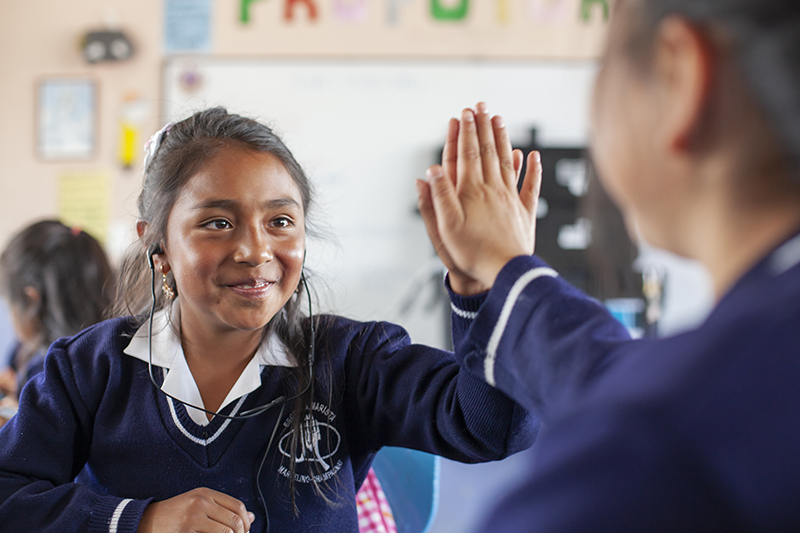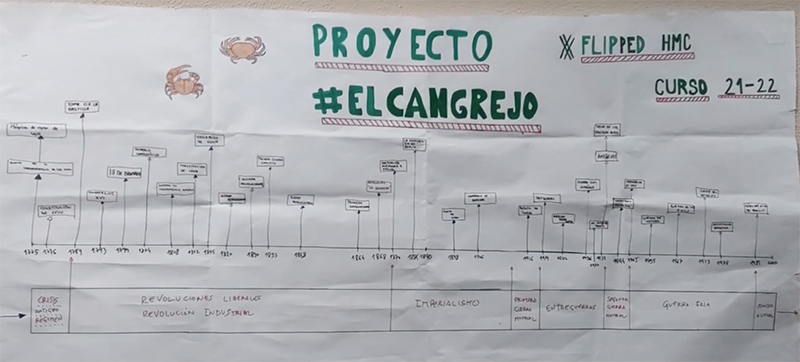Do you remember when you didn’t understand something at school and you asked one of your classmates for help? The above, systematised, is peer mentoring, namely a set of approaches in which the students work in pairs or small groups to provide each other with pedagogical support.
To find out exactly how it works, we’ll use an analysis of the Educational Endowment Foundation, an independent organisation that analyses the effectiveness of different educational approaches and methodologies by studying the existing evidence.
What it consists of
As mentioned above, peer mentoring (or mentoring among equals) is a teaching methodology that involves the students learning from each other. Its variations include, for example, fixed-role mentoring, whereby one student, usually an older one, takes on the role of mentor and is paired with one or more students, usually younger ones, and reciprocal role mentoring, whereby the students continuously swap the roles of mentor and student.
In all cases, one of its key features is that the students assume responsibility for certain aspects of the teaching and the evaluation of its success.
Five additional months of progress
Benefits for all. The main conclusions of the EEF study point to its impact, with an average positive effect equivalent to approximately five additional months of progress in an academic year. Higher-achieving pupils tend to benefit more (more than six months of progress) than lower-achieving pupils. Studies have identified benefits for both mentors and students across a wide range of age groups. The impact is also similar (more than five months of progress) in terms of both literacy and numeracy.
Support and training for the mentors. Peer mentoring appears to be particularly effective when the students receive support to ensure that the quality of the peer interaction is high, with, for example, question frameworks for use in the mentoring sessions and training and feedback for the mentors.
Revision is better than new learning. Peer mentoring seems to be more effective when it’s used to review or consolidate learning rather than to introduce new material.
Optimal duration and frequency. Intensive blocs of four to ten weeks with regular sessions (4-5 times a week) appear to have the most impact on both mentors and students.
Social and personal benefits. Successful approaches to peer mentoring can also have other benefits, such as support for the students’ social and personal development and an increase in their self-confidence and motivation for learning.
Digital technology. Several studies have been conducted using digital technology to support peer mentoring approaches with a similar overall impact.
Can they assist vulnerable students?
Although there are few data that specifically examine students from disadvantaged backgrounds, the studies have shown that low-achieving students often receive additional benefits from peer mentoring. Peer mentoring approaches can help the students to bridge gaps in their learning by offering specific and peer-led support to consolidate the classroom learning, practice skills and identify and overcome misconceptions. There is also evidence to suggest that peer mentoring can offer the mentors the chance to review and revise their skills and prior knowledge and develop a meta-cognitive understanding of the topics.
The studies have shown that low-achieving students often receive additional benefits from peer mentoring.
How to put it into practice
When it comes to putting peer mentoring into practice, certain aspects should be taken into account in order to ensure high-quality interaction between the students. For example:
- Carefully considering the appropriate pairing of the mentor and mentee. For example, in peer mentoring involving different ages, some studies have found that a gap of less than three years is optimal, although it’s essential to ensure that the difference is great enough for the work to be challenging for the mentee and, at the same time, easy enough for the mentor to support him/her.
- Structuring the tasks properly so that the sessions focus on the existing knowledge.
- Providing teaching materials and learning frameworks to guide the mentors with regard to how to structure the learning and the types of questions that the students should be asked.
- Supporting the students and mentors with pedagogical approaches, such as demonstrations of knowledge, corrections of common misconceptions, feedback and progress evaluations.
How much does it cost?
The average cost of peer mentoring is very low and largely based on teacher training and learning resources. Implementing peer mentoring will also require a moderate amount of staff time compared with other approaches.
In addition to the time and cost, the heads of the schools have to consider how to maximise the quality of the peer mentoring interactions and ensure that sufficient time is assigned to identifying and implementing improvements in the approaches.
Moreover, consideration should be given to the structural costs for the school entailed by the changes in the way the teachers work with each other. Thus, peer teaching means that the teachers have to modify their collaborative dynamics in the design of their practices in and outside the classroom, and therefore they also need to be trained in how to work on peer mentoring in these environments.
We know that going to school isn’t necessarily synonymous with learning. We also know that, unfortunately, the socio-economic level of the families is a determining factor in the students’ learning. Within this context, peer mentoring could prove to be a highly cost-effective alternative in reducing the education gap.






